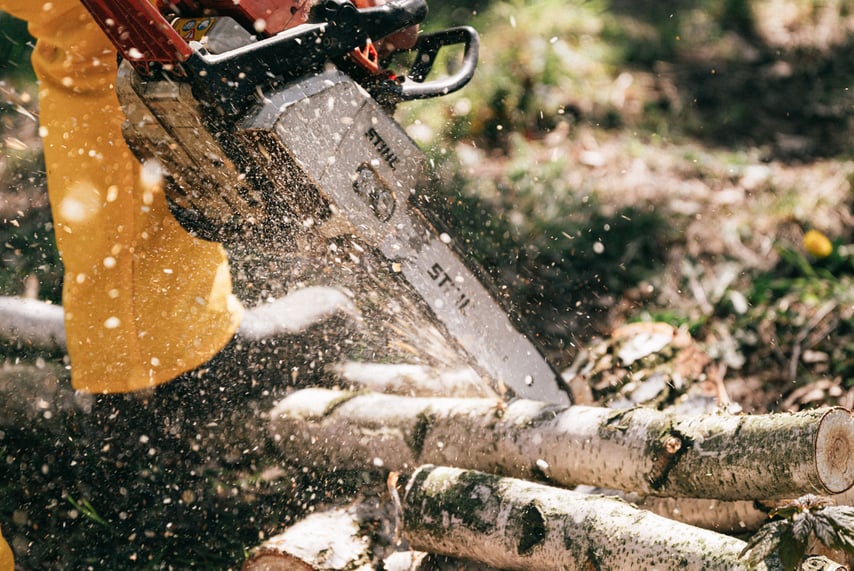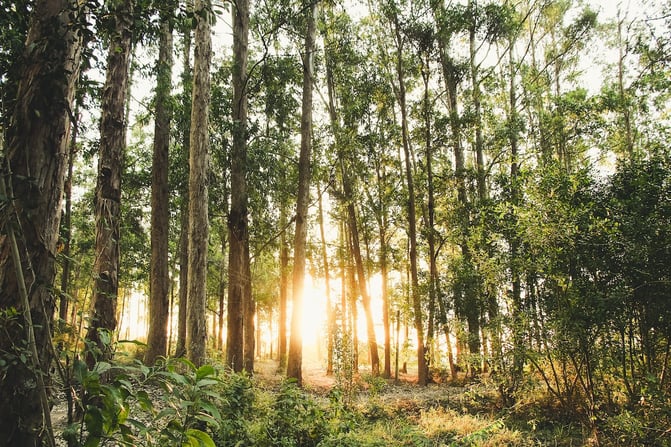
Like all of us paying attention to the forestry industry, you have likely seen the continued onslaught of headlines discussing the rising wave of risk associated with wildfires and related effects.
According to the NOAA, we continue to stay on track for an intense year of wildfires – much like the historic 2020, 2021 and 2022 seasons. As climate change drives drier and warmer environmental conditions, we can expect the problem to amplify in the years to come.
Because of the human-caused climate change risks, we must also take the initiative to respond to the increased threat of wildfires. One of the most effective ways we can do this on an industry-wide scale is through the process of forest thinning.
…Or is it?
Despite the support of forest thinning across most major forestry science communities, critics continue to push against it. Many call it ‘stealth logging’ – a method to up the amount of wood harvesting while saving face and claiming it’s for wildfire prevention.
In this post, we’ll explore this issue to better understand why forest thinning brings so much value and benefit to forests inside and out of the logging industry.
Forest Thinning: A Well-Established Wildfire Reduction Technique

Here at Forest2Market, a ResourceWise company, we have discussed the benefits of forest thinning before. Thinning is not only good for forests and landowners, but it also reduces the more severe effects of wildfires.
Those who work in forestry and wildfire ecology near-unanimously agree that fuels reduction is a fundamental component to help forests better thrive and reduce the danger and risks of severe wildfires. This comes through strategic use of both controlled burning and, as you probably guessed, forest thinning.
Intervention with forest thinning promotes the overall health of the surrounding tree ecosystem. As the Oregon Forest Resources Institute (OFRI) describes, “Thinning is often the most important thing you can do to influence the growth and health of your forest … Thinning can reduce fire hazards, generate revenue, and increase the value of remaining trees.”
To counter the above claim about thinning as a form of stealth logging, the truth is that thinning is more like “tree weeding” than anything else. Logging focuses on larger, mature trees. Thinning focuses on small trees that could more directly perpetuate wildfire spreading. Whereas logging makes money, in most cases, forest thinning costs money.
The major difference comes with the final purpose in mind. If forest thinning was actually an underhanded way to harvest more trees, why would anyone pursue it if it doesn’t make money? The reality is that thinning is meant to help viable trees thrive while diminishing the risks and damage of potential wildfires.
On Intrinsic Value and Forest Aesthetics

The OFRI also claims that thinning a forest improves the aesthetic appeal of a forest. From their perspective, this enhances the habitat potential for various wildlife who call the forest home.
To this point, we can certainly find some valid space to disagree. Those who criticize forest thinning do so on the merit of leaving things in their natural state. Accordingly, a thinned forest would not be more aesthetically pleasing than a natural one as it has been artificially altered through human intervention.
The argument here is that leaving nature as-is – untouched by humans – carries value in-and-of itself.
The intrinsic value of an untouched forest is, of course, a matter of contention with philosophers, ecologists, and foresters – among countless others. From the forestry point of view, there is little value in leaving forests undisturbed. This perspective considers leaving a forest undisturbed like leaving a potential pile of money sitting there for no discernable reason.
Yet from a philosophical standpoint, there is assuredly some value in leaving an old-growth forest as nature intended. Part of the appreciation within nature is admiring and respecting things – as they are and without our interference.
Whether you agree or disagree with this notion, it is certainly a valid one. To that extent, perhaps we can concede that for some people, a natural forest is a valuable asset worth protecting and preserving without interference.
The Reality of Human-Caused Climate Change and Forest Thinning

However, as the world changes thanks to human-caused climate change, so too does our understanding of these natural resources.
There is a give-and-take here between the expansion of forestry and the protection of untouched forests for their intrinsic, natural value.
Many experts argue that the idea of a primeval forest is a bygone concept. Primitive forests were often filled with enormous trees in multiple densities. Under the canopy, you would likely see a similar variety of plants and trees.
The current state of forestlands is much different. Modern forests contain much more underbrush, shrubs, vines, and other forest biomass. Therefore, they are much more vulnerable to the ravages of wildfires.
Additionally, climate change has amplified the cyclical risk for wildfires. As temperatures rise, problems such as drought, increased wind, and other conditions also increase.
These problems are here to stay, and they directly impact how we understand forests. Our forests continue to face immense wildfire risks which extend far beyond the trees. Even federally protected or untouched forests are vulnerable.
The takeaway here is straightforward: we can understand the aesthetic value of untouched forestlands. But thanks to the state of modern forests and human-caused climate change, we need to intervene.
Human intervention is necessary to mitigate the risks caused by human activity. And one of the best ways we can achieve that is through routine and targeted forest thinning.
Forest2Market: Empowering Your Decisions
Forest2Market, a ResourceWise company, has empowered participants in the global forest, wood products, pulp & paper, biochemical, biofuel and bioenergy industries for over 20 years. We help businesses make exponentially better decisions through the strategic application of industry expertise and unique datasets.
As a global provider of timber pricing, cost benchmarks and in-depth business analytics, businesses trust F2M for their pinpoint accuracy and scalable marketing insights.
Learn how Forest2Market can inform your business decisions.


 Harvey Greer
Harvey Greer



